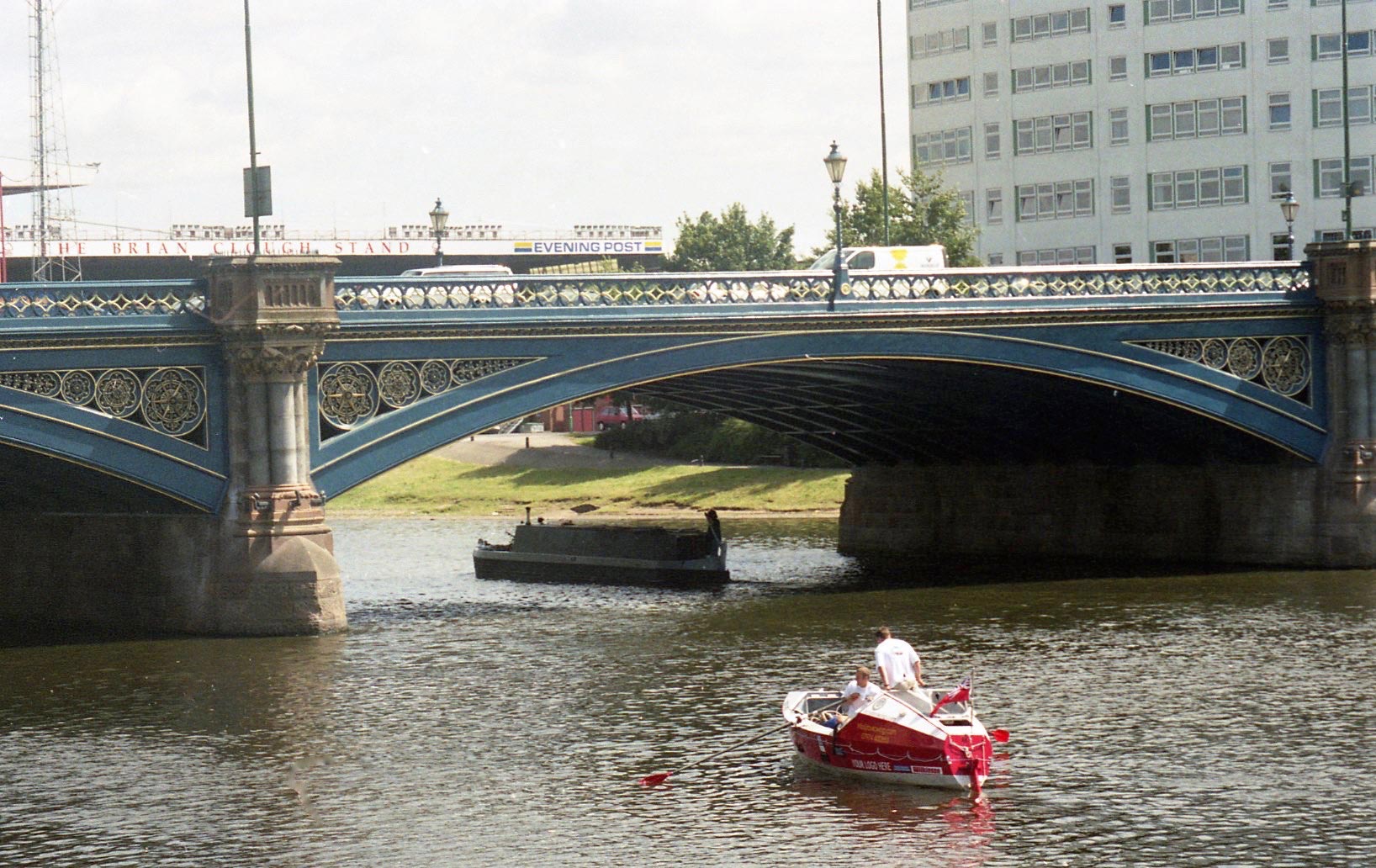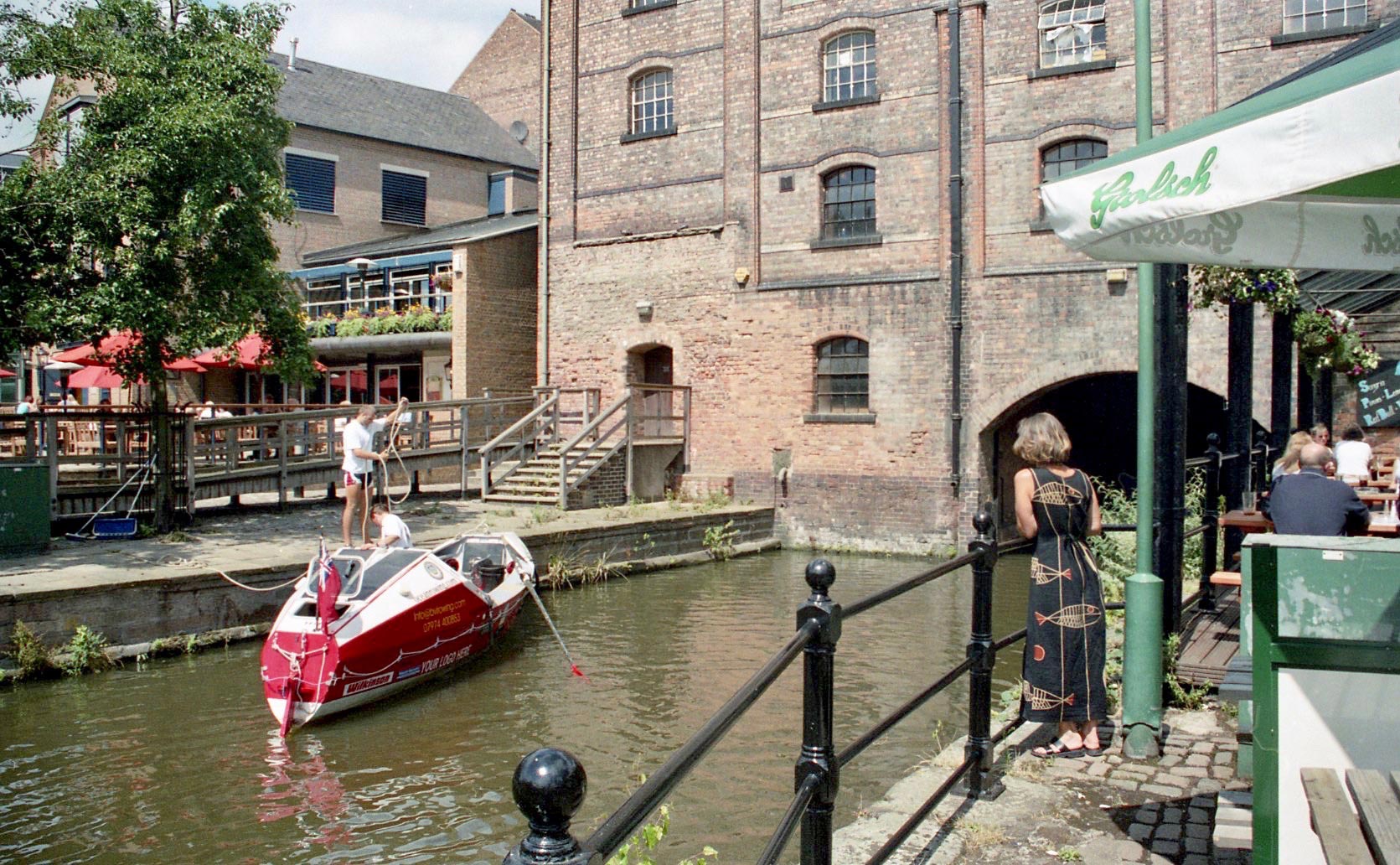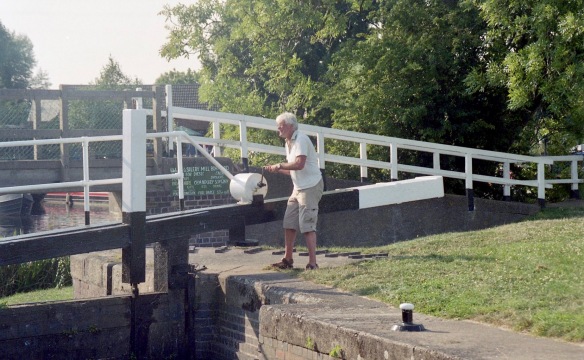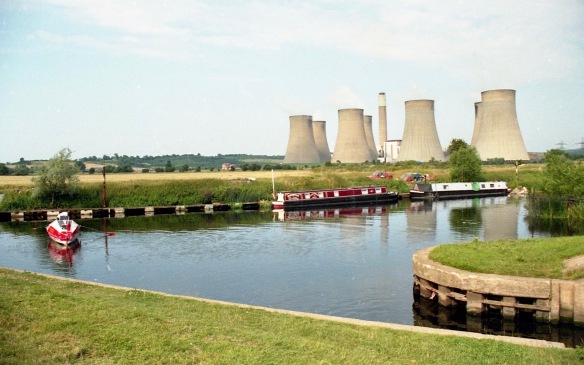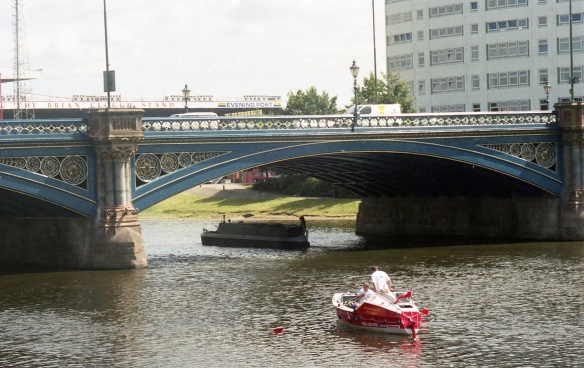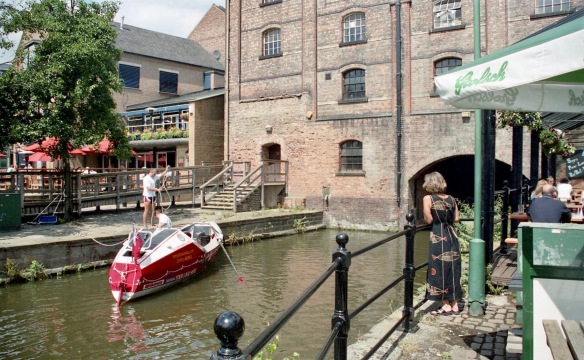


Sam continued rowing Pacific Pete along the River Soar through Leicester,


passing the National Space Centre, and


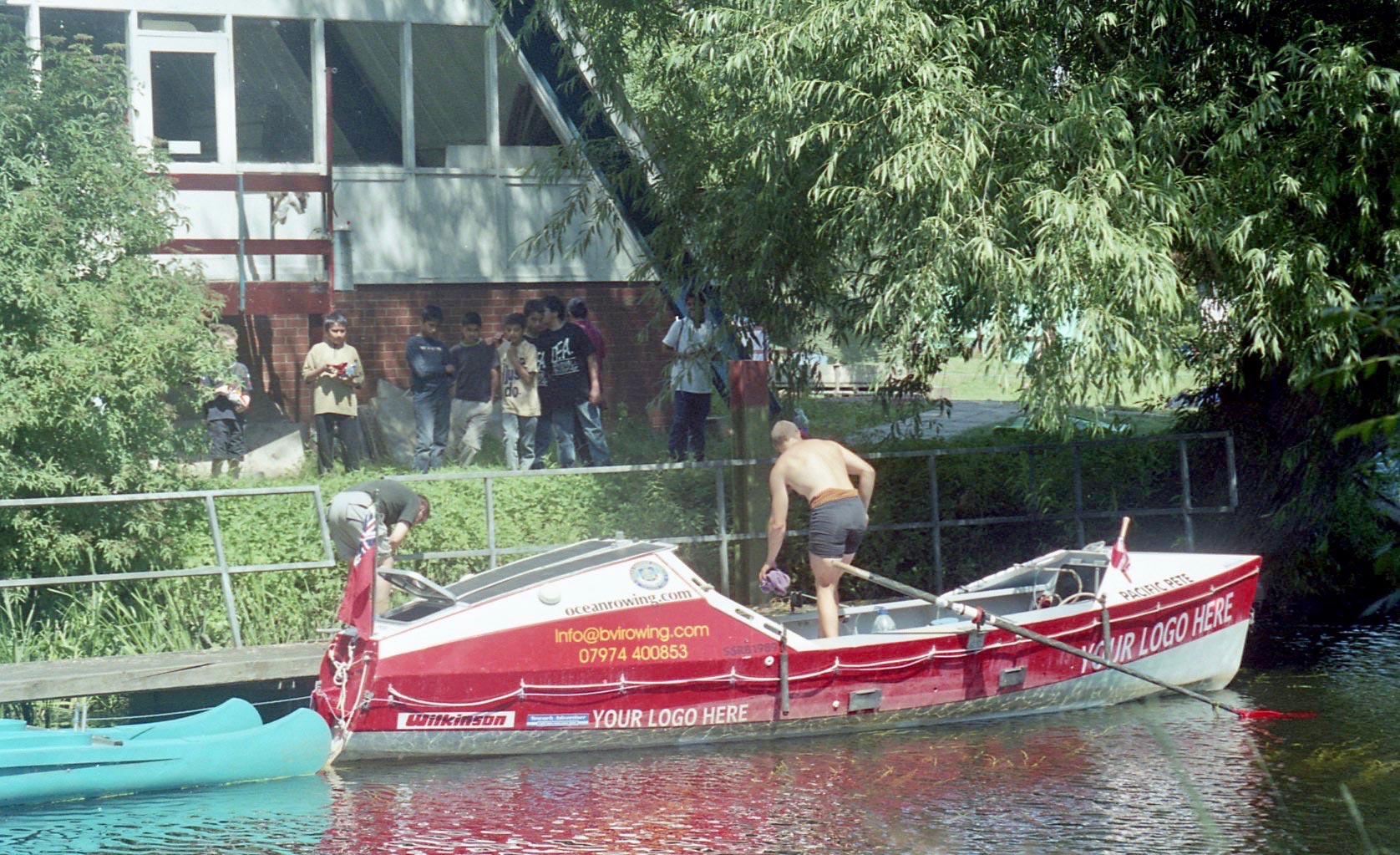
introducing boys at an Outdoor Pursuits Centre to the boat.
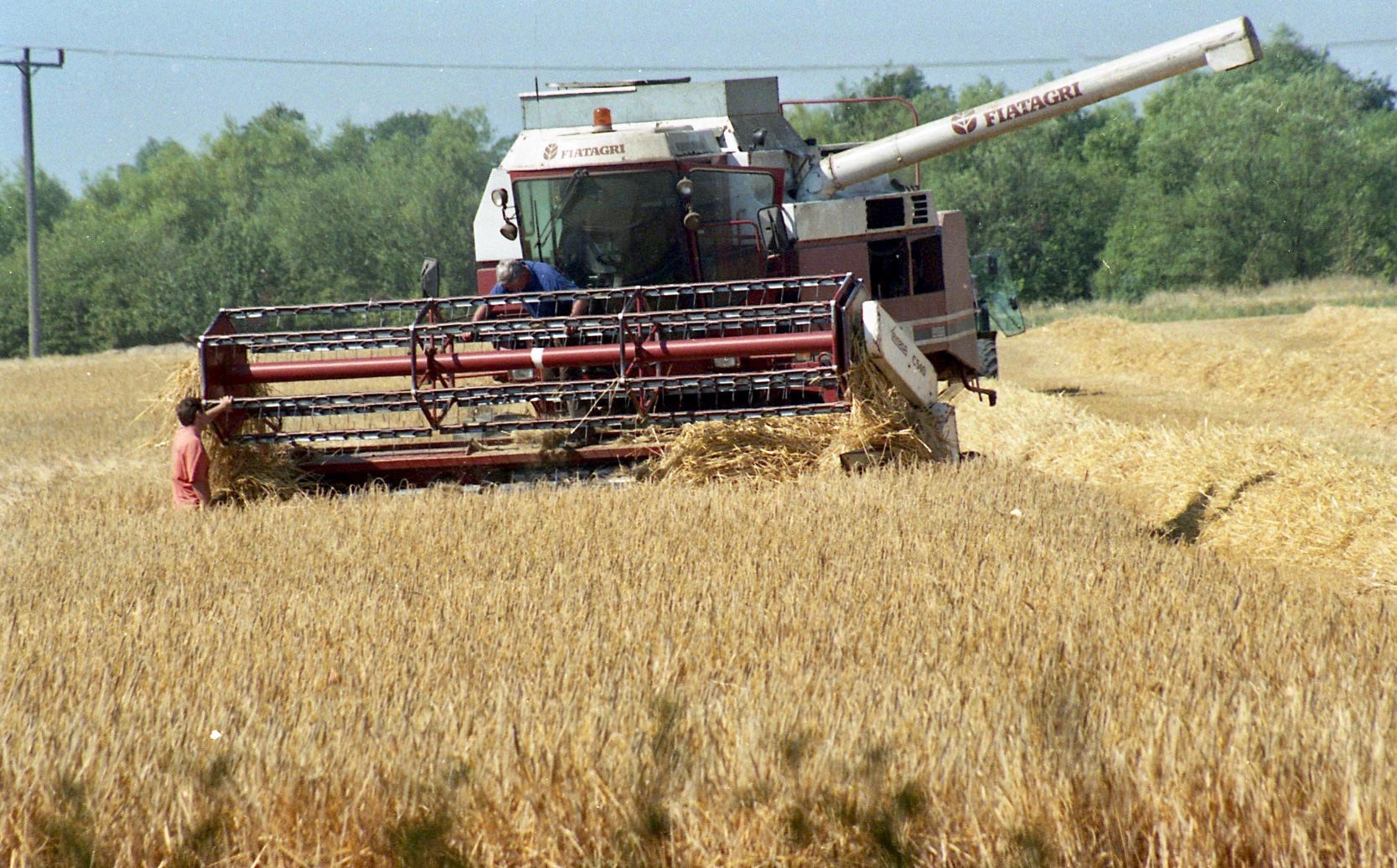
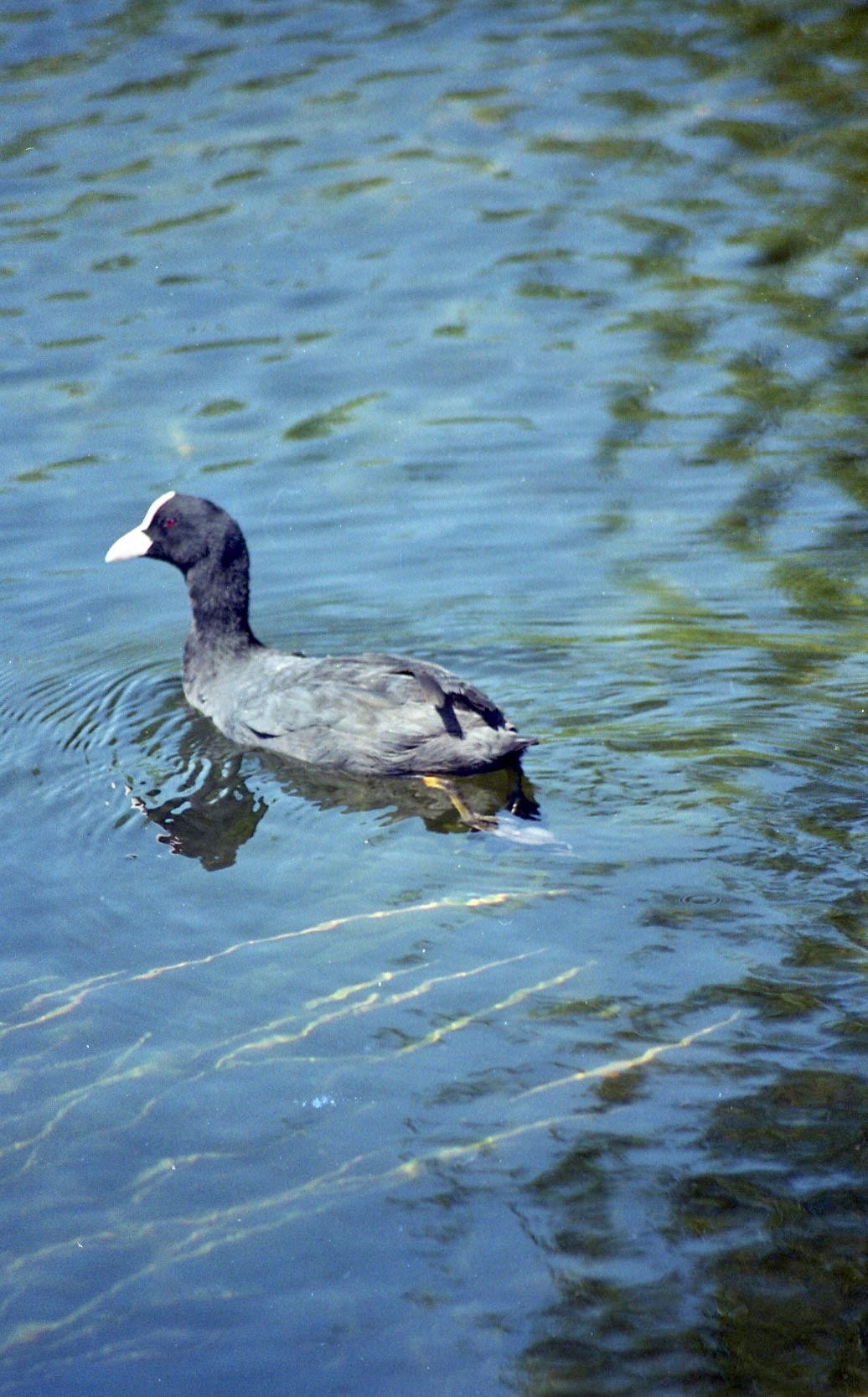
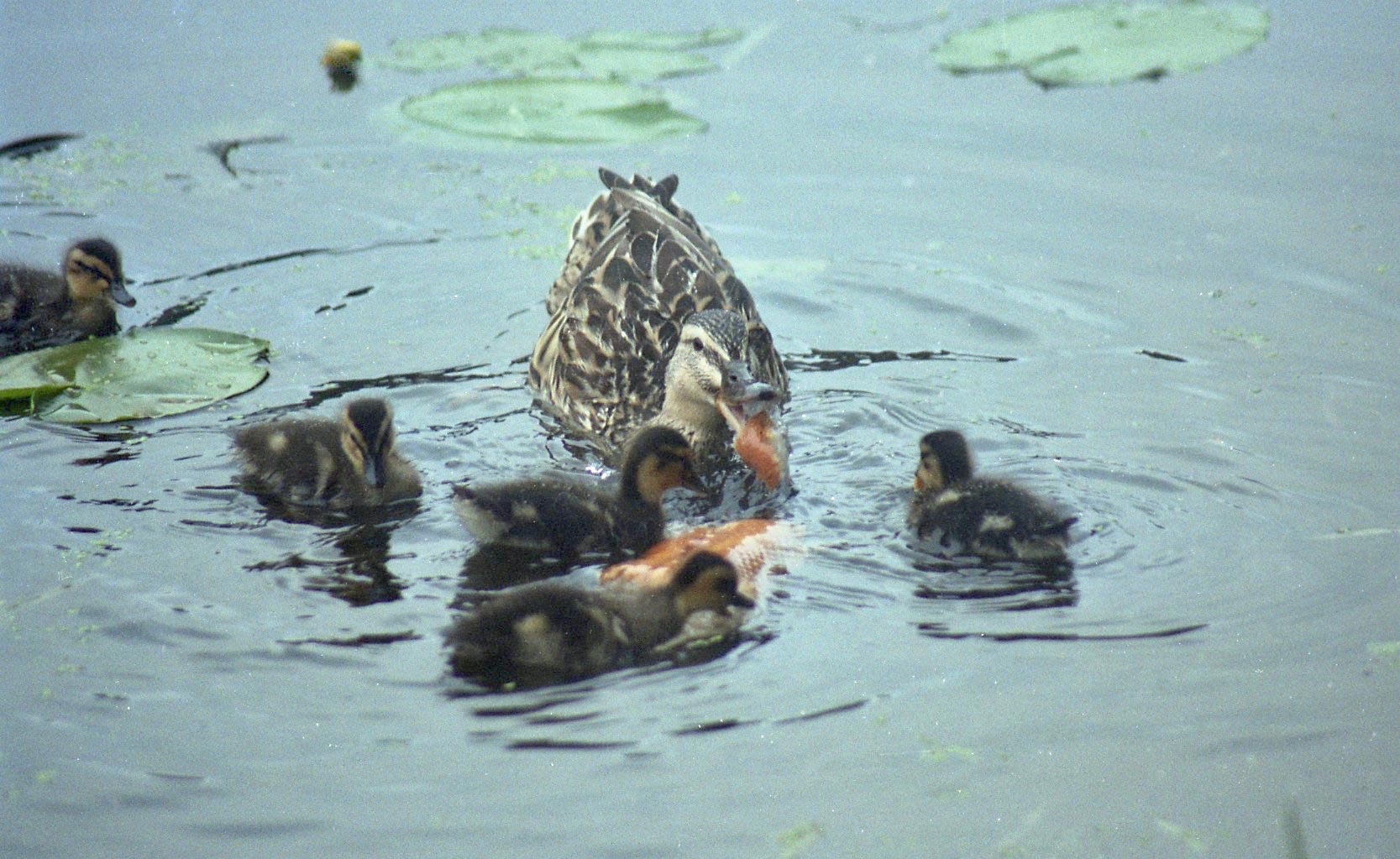


A harvester gathered in the crop; a coot paddled by; a mallard breakfasted with her ducklings; and a water snake broke the surface of the river in which a mallow was reflected.
James having returned home for a short period, I got to work the locks.
Anyone who has read https://derrickjknight.com/2022/03/25/a-knights-tale-118-the-long-walk-begins/ will know how I avoided encountering bulls in the fields I had to cross. This rather amused a gentleman I met en route. He said that no farmer would dare leave a dangerous animal on such a public area. Following this advice with a great deal of trepidation, I mounted a stile around which this herd of cattle were clustered. As I climbed over the animals all ran away; the scary bull in fast pursuit.
Here Sam approaches Ratcliffe lock, in sight of the coal fired Power Station opened in 1968.
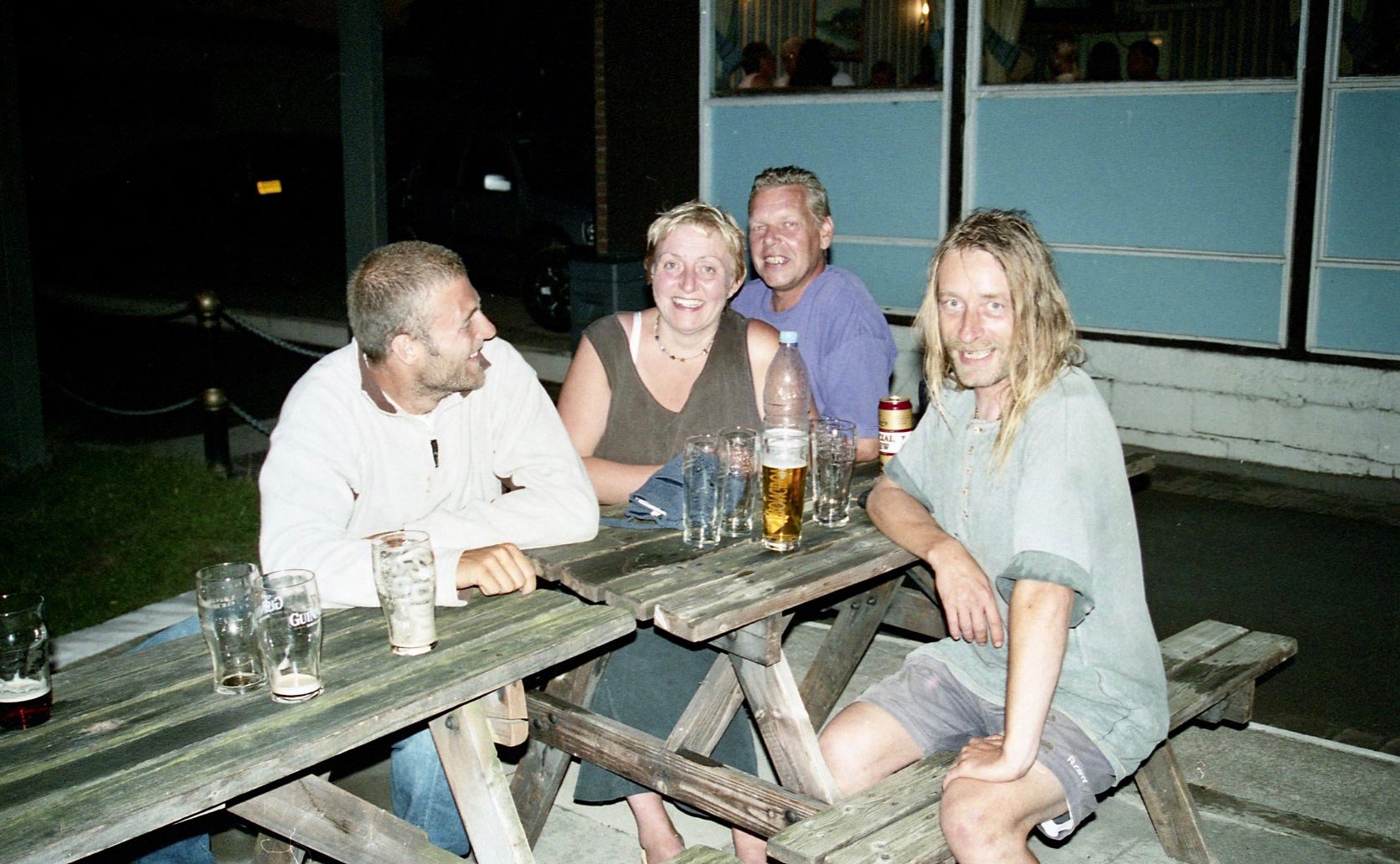


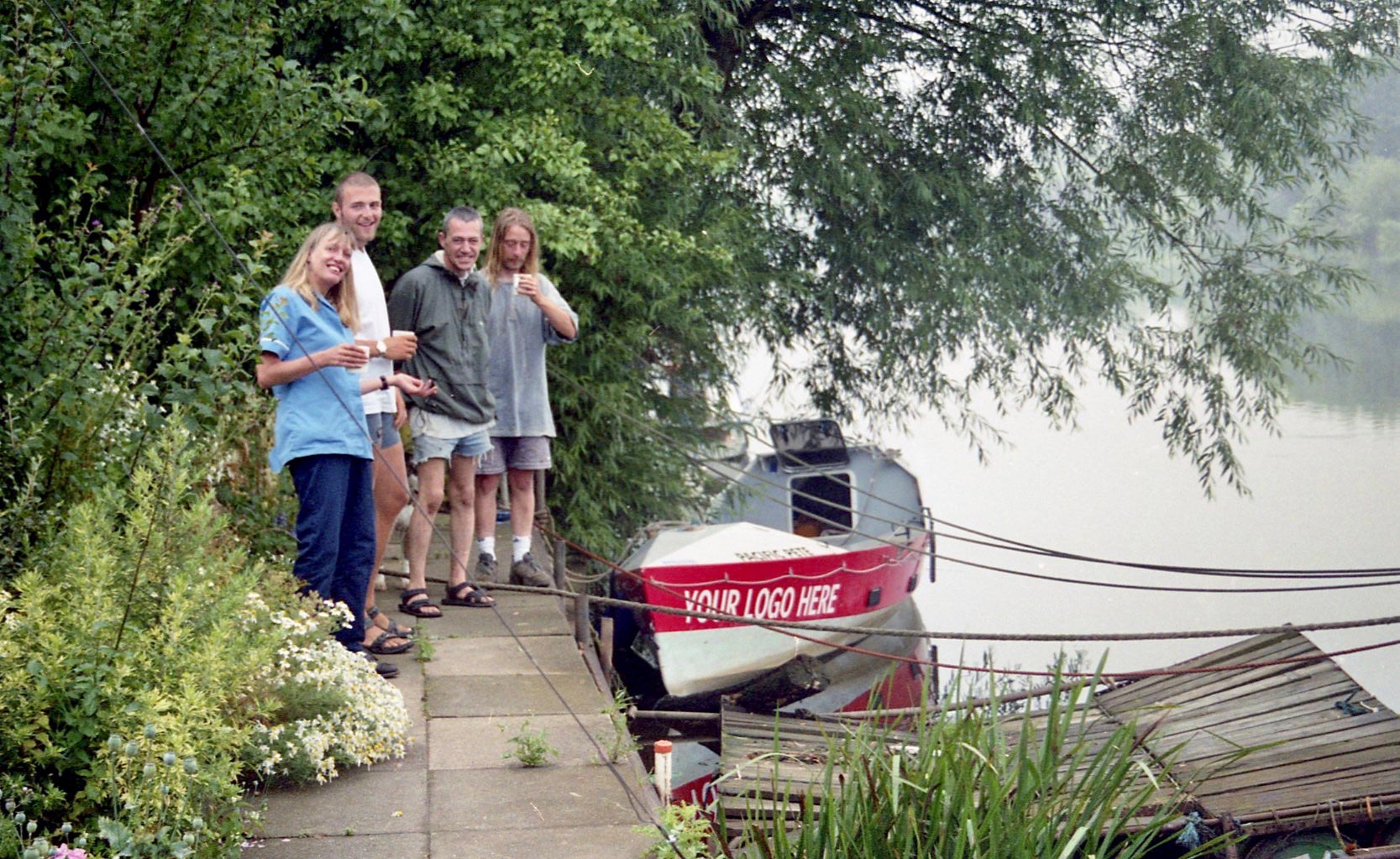
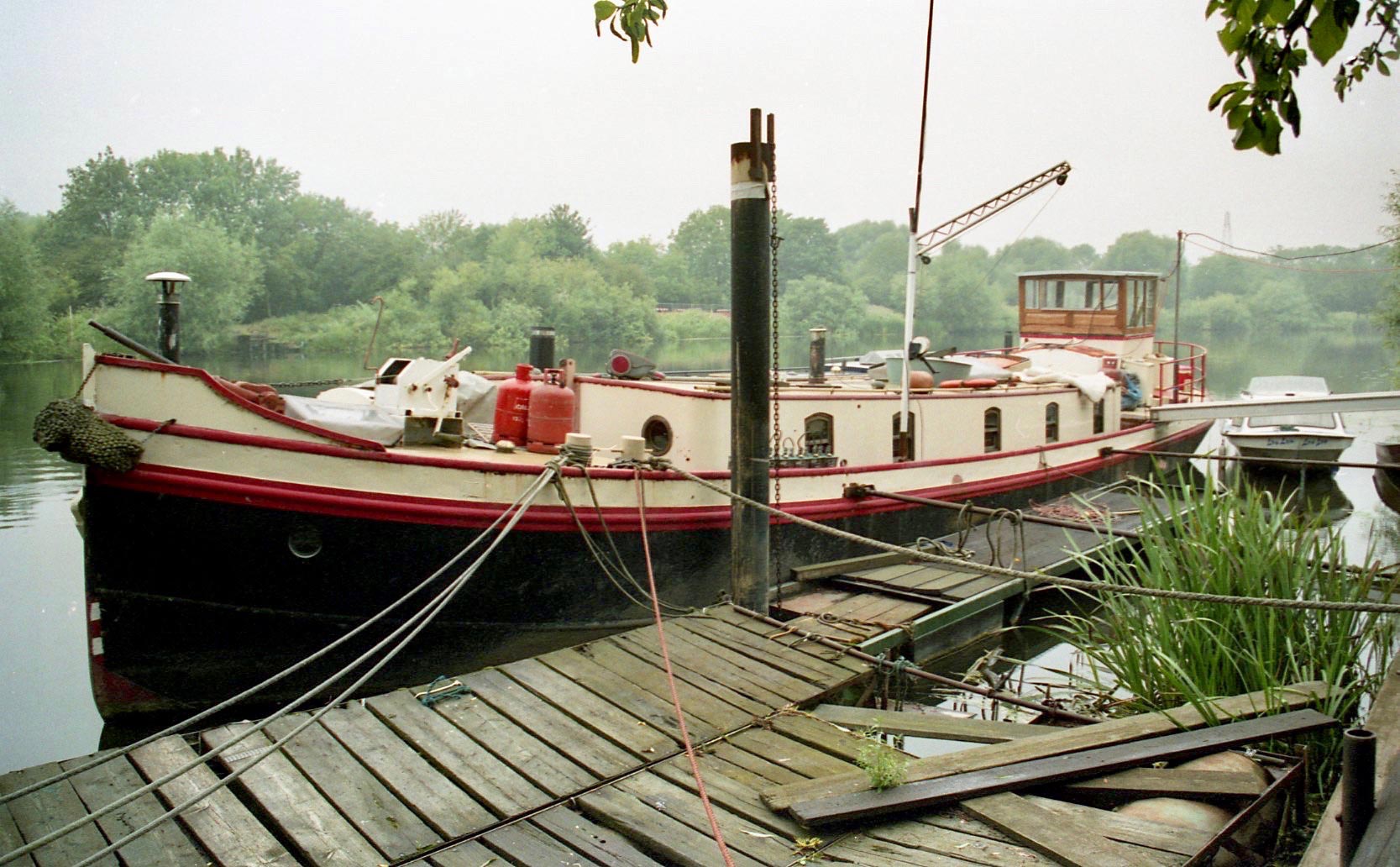
Further on, at Beeston, we made another group of friends. Paul, with the long hair, owned a wonderful Dutch barge, on which I slept overnight.
James had rejoined Sam by the time he rowed under Trent Bridge, in sight of The Brian Clough stand of Nottingham Forest football ground.
My son was then interviewed on the bank of the river by Radio Nottingham.
For the penultimate, short, leg of the trip, only four miles in length, we were joined by Becky’s friend Jo Stone, and by Jessica, who watches our son and James moor on the Nottingham waterfront. Sam was to row the race in aid of Cancer Research. Jo suffered from leukaemia, and Jessica from myeloma. The far younger Jo was not to live much longer; Jessica survived until July 2007, having accompanied us to the finish at Port St Charles, Barbados in March 2004.



